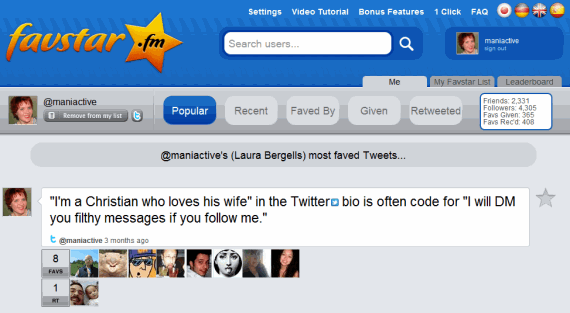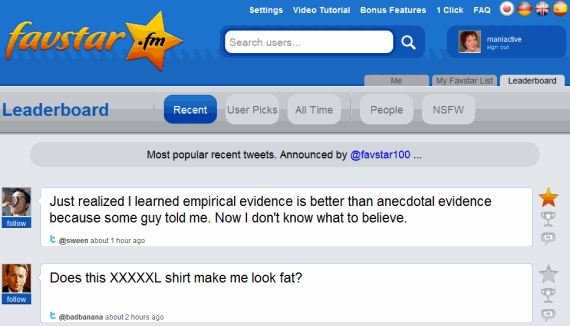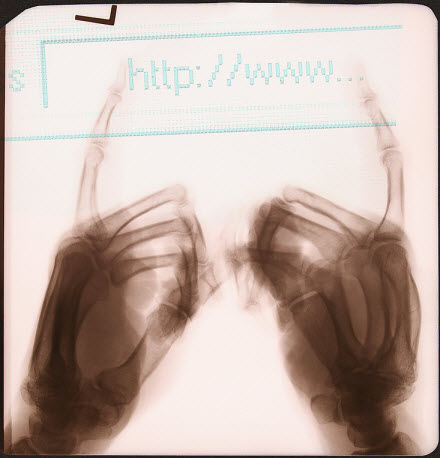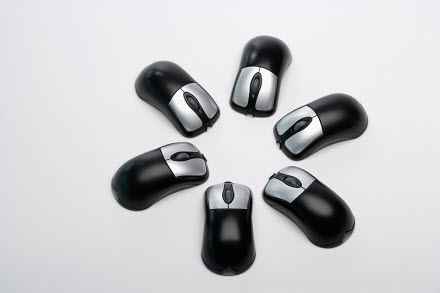OK, I’ll admit it. Very few days go by where I don’t check into favstar.fm. Why? Because I like a good grin. And I like to find humor in offbeat and unusual places.
Favstar is like an underground Twitter subculture of frustrated writers and wanna-be comics. A Twitter companion site, you can simply go to favstar.fm and sign in with your Twitter account. On a completely selfish or business level, you can use the Favstar service to discover who has starred or “favorited” your Tweets. But there’s more to favstar than vanity searches for your surreptitious gold stars.
 But first, why star instead of RT? Sometimes you really think a tweet is perky, funny, or entertaining — but you can’t retweet everything you think is great. That could really junk up your timeline. And it might not be relevant to your followers. Instead, you can give props to peeps who give good Tweets by bookmarking the Tweet with a star. This also lets you curate interesting Tweets as well as build relationships with people you think are witty.
But first, why star instead of RT? Sometimes you really think a tweet is perky, funny, or entertaining — but you can’t retweet everything you think is great. That could really junk up your timeline. And it might not be relevant to your followers. Instead, you can give props to peeps who give good Tweets by bookmarking the Tweet with a star. This also lets you curate interesting Tweets as well as build relationships with people you think are witty.
I’ve been visiting favstar.fm for some months now. The people who are active on Favstar have formed something of a clandestine Twitter counter culture. They Tweet for the gold stars. It’s like applause to them.
At Favstar, you’ll find categories for funny, tech, and celebrity tweets. You’ll discover the NSFW — Not Safe for Work — section (don’t say I didn’t warn you). Favstar also helps you curate your own lists at Twitter, as well.
All that said, I’m not terribly active on Favstar — I read & giggle & applaud by giving out gold stars more than anything else. Going to favstar.fm to read the “Leaderboard” is my guilty pleasure — as is curating a list of warm & witty Twitter newcomers to my Favstar lists. I’ve found fun people to connect with who excel at using Twitter for self-expression and pounding out one-liners.
Favstar is my guilty Twitter pleasure — what’s yours?

 credit: osbomb
credit: osbomb













